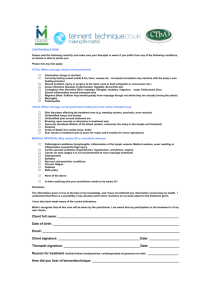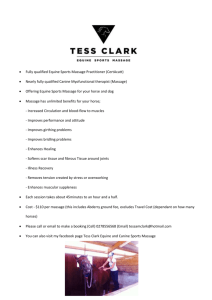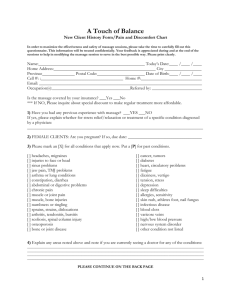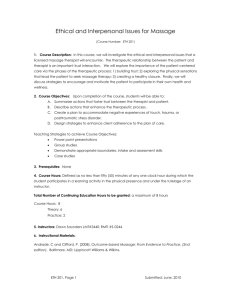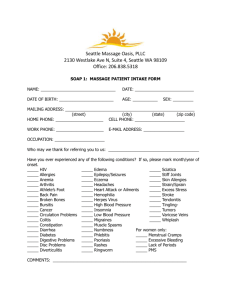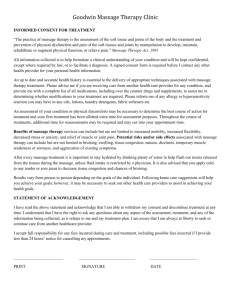Program Review 2009-2010 Massage Therapy Priorities for the Future
advertisement
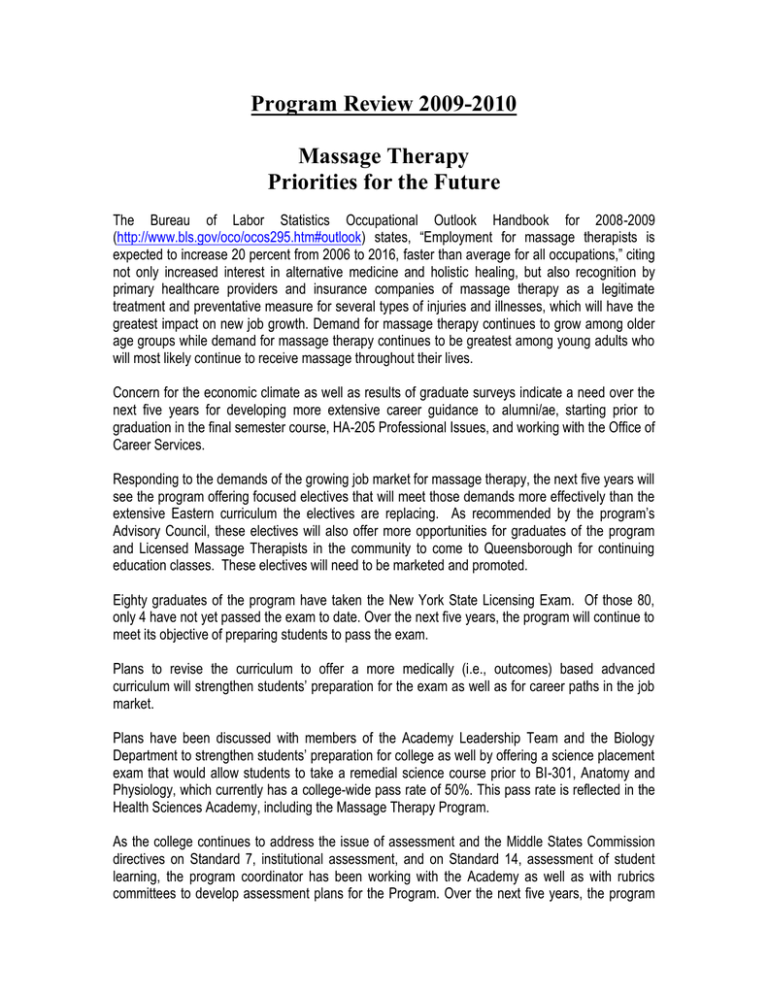
Program Review 2009-2010 Massage Therapy Priorities for the Future The Bureau of Labor Statistics Occupational Outlook Handbook for 2008-2009 (http://www.bls.gov/oco/ocos295.htm#outlook) states, “Employment for massage therapists is expected to increase 20 percent from 2006 to 2016, faster than average for all occupations,” citing not only increased interest in alternative medicine and holistic healing, but also recognition by primary healthcare providers and insurance companies of massage therapy as a legitimate treatment and preventative measure for several types of injuries and illnesses, which will have the greatest impact on new job growth. Demand for massage therapy continues to grow among older age groups while demand for massage therapy continues to be greatest among young adults who will most likely continue to receive massage throughout their lives. Concern for the economic climate as well as results of graduate surveys indicate a need over the next five years for developing more extensive career guidance to alumni/ae, starting prior to graduation in the final semester course, HA-205 Professional Issues, and working with the Office of Career Services. Responding to the demands of the growing job market for massage therapy, the next five years will see the program offering focused electives that will meet those demands more effectively than the extensive Eastern curriculum the electives are replacing. As recommended by the program’s Advisory Council, these electives will also offer more opportunities for graduates of the program and Licensed Massage Therapists in the community to come to Queensborough for continuing education classes. These electives will need to be marketed and promoted. Eighty graduates of the program have taken the New York State Licensing Exam. Of those 80, only 4 have not yet passed the exam to date. Over the next five years, the program will continue to meet its objective of preparing students to pass the exam. Plans to revise the curriculum to offer a more medically (i.e., outcomes) based advanced curriculum will strengthen students’ preparation for the exam as well as for career paths in the job market. Plans have been discussed with members of the Academy Leadership Team and the Biology Department to strengthen students’ preparation for college as well by offering a science placement exam that would allow students to take a remedial science course prior to BI-301, Anatomy and Physiology, which currently has a college-wide pass rate of 50%. This pass rate is reflected in the Health Sciences Academy, including the Massage Therapy Program. As the college continues to address the issue of assessment and the Middle States Commission directives on Standard 7, institutional assessment, and on Standard 14, assessment of student learning, the program coordinator has been working with the Academy as well as with rubrics committees to develop assessment plans for the Program. Over the next five years, the program faculty will complete revisions of all syllabi to make them consistent with the College’s General Education Objectives, Curriculum Objectives, and Outcomes for each course, as well as for the program as a whole. This endeavor includes adaptation of the College Gen Ed to assess students’ progress through the Cornerstone (HA-100), Milestone (HA-220), and Capstone (HA-204) courses, as well as course-specific rubrics to assess student learning outcomes. As indicated in the section on facilities, issues have been raised concerning the laboratory and clinic. Most of these have been resolved, and Buildings and Grounds is working to resolve the others. Recommendations: Coordinate with the Office of Career Services to develop more extensive career guidance to graduates of the Massage Therapy program Develop with the Marketing Office a marketing plan to promote the electives that will offer more opportunities for graduates of the program and for licensed massage therapists in the community to come to Queensborough for continuing education classes Revise the curriculum to offer a more medically-based (i.e., outcomes-based) advanced curriculum to strengthen student preparation for the licensure examination and for career paths Work with Health-related Sciences Academy faculty leadership and the Department of Biological Sciences and Geology to develop a science placement test for BI 301, Anatomy and Physiology Establish a Massage Therapy program assessment committee to implement recommendations from the program review conducted during spring 2010 Revise all course syllabi and outlines according to college templates and create programmatic outcomes for each curricular objective and applicable college educational objectives, including specific knowledge areas and demonstrable massage therapy skills Conduct assessments of four Massage Therapy courses each academic year Evaluate possible effectiveness of standardized examinations for cornerstone, milestone, and capstone courses To resolve remaining concerns with the facilities: Continue to monitor the air conditioning in the massage therapy laboratory Look into replacing sinks in the locker room Purchase different four-foot fluorescent bulbs Purchase new curtains for the clinic bays

